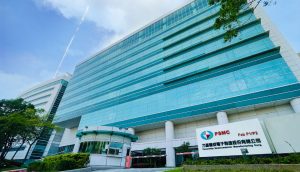Popular Keywords
- About Us
-
Research Report
Research Directory
Semiconductors
LED
Consumer Electronics
Emerging Technologies
- Membership
- Price Trends
- Press Center
- News
- Events
- Contact Us
News
- Home
- News
[News] US Chip Supply Chain’s Expansion into the Philippines Nears?

In recent years, influenced by complex international dynamics and the need to safeguard supply chain security, Southeast Asian countries such as Singapore, Malaysia, and Vietnam have become prime locations for numerous semiconductor giants to establish overseas operations. Now, the Philippines may join the ranks of these nations.
Recently, U.S. Secretary of Commerce Gina Raimondo addressed her desire to assist the Philippines in doubling its semiconductor facilities to lessen the geographic concentration of the global chip supply chain.
Previously, according to the press release of the U.S. Department of Commerce, Raimondo has announced the plan to invest USD 1 Billion in Philippines.
“The Indo-Pacific includes some of the most dynamic economies in the world. It was an honor to lead the first-ever trade mission of this nature to the Philippines and to underscore the immense potential, which is evident in the more than $1 billion of investments from this mission alone,” said Raimondo.
According to Taiwantrade’s Data, it has indicated that the semiconductor and electronics industry is the top-performing sector among the Philippines’ export commodities, accounting for approximately 60% of total commodity exports.
The semiconductor industry in the Philippines primarily focuses on the assembly and testing sector. With a high literacy rate and a young workforce proficient in English, the Philippines has become a significant assembly and testing hub for global semiconductor giants such as Amkor, Intel, ADI, and TI (Texas Instruments).
Geographically, the semiconductor industry in the Philippines is concentrated in four main regions: Manila, Calabarzon, Northern/Central Luzon, and Cebu. Among these regions, Manila stands out as the primary hub, hosting assembly and testing facilities for globally renowned companies like Amkor, Onsemi, as well as Toshiba’s hard drive assembly plant.
Currently, the Philippines has 13 semiconductor assembly, testing, and packaging facilities. Most of the products produced are exported to other regions for assembly or application. The integrated circuits (ICs) used in these facilities mainly come from Taiwan, the United States, and Japan, with finished products primarily exported to Singapore, China, and Japan.
However, the Philippines is not content with just the assembly and testing sector. In February of this year, it was previously reported by Philippine Board of Investments (BOI) in its press release, stating that the BOI would collaborate with the United States to expand its semiconductor capabilities, including the construction of its first fab.
The BOI aims to build a laboratory-scale fab. This facility will provide general manufacturing process technology to encourage local semiconductor startups and train semiconductor engineers.
Read more
- [News] US Government Considers Adding ChangXin Memory Technologies to Entity List, Imposing Further Sanctions on Chinese Firms
- [News] U.S. Department of Commerce Introduces New Regulations to Restrict China from Training AI Using U.S. Cloud Services
(Photo credit: Intel)
Please note that this article cites information from the WeChat account DRAMeXchange and Taiwantrade.
Subject
Related Articles
Recent Posts
- [News] US Chip Supply Chain’s Expansion into the Philippines Nears?
- [News] Intel Rumored to Temporarily Retain Chip Supply License to Huawei, While AMD Awaits Response
- [News] Apple Reportedly Begins Development of M4 Chip and May Utilize TSMC’s 2nm Process
- [News] TSMC Reportedly Sensing Increased Orders Again, CoWoS Production Capacity Surges
- [News] Assistant to SMIC’s Co-CEO Joins CXMT, Drawing Industry Attention
Recent Comments
Archives
- March 2024
- February 2024
- January 2024
- December 2023
- November 2023
- October 2023
- September 2023
- August 2023
- July 2023
- June 2023
- May 2023
- April 2023
- March 2023
- February 2023
- January 2023
- December 2022
- November 2022
- October 2022
- September 2022
- August 2022
- July 2022
- June 2022
- May 2022
- April 2022
- March 2022
- February 2022
- January 2022
- December 2021
- November 2021
- October 2021
- September 2021
- August 2021
- July 2021
- June 2021
- May 2021
- April 2021
- March 2021
- February 2021
- January 2021
Categories
- 5G Technologies
- AR / VR
- Artificial Intelligence
- Automotive Technologies
- Broadband & Home Network
- Cloud / Edge Computing
- Consumer Electronics
- Display
- Display Supply Chain
- Display Technologies
- DRAM
- Emerging Technologies
- Energy
- IC Design
- IC Manufacturing, Package&Test
- Industry 4.0
- IoT
- IR LED / VCSEL / LiDAR Laser
- LCD
- LED
- LED Backlight
- LED Demand / Supply Data Base
- LED Display
- LED Lighting
- Lithium Battery and Energy Storage
- Micro LED / Mini LED
- Monitors / AIO
- NAND Flash
- Notebook Computers
- OLED
- Others
- Panel Industry
- Semiconductors
- server
- Smartphones
- Solar PV
- Tablets
- Telecommunications
- TVs
- Upstream Components
- Wafer Foundries
- Wearable Devices
- 未分類




